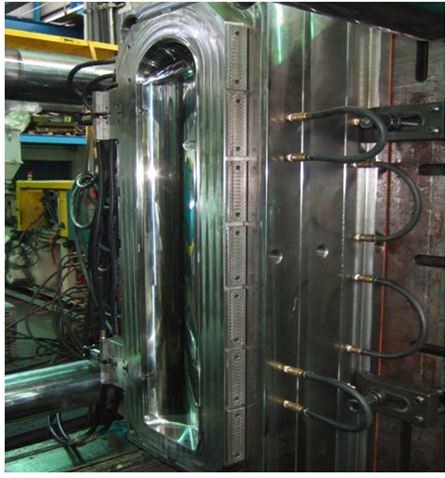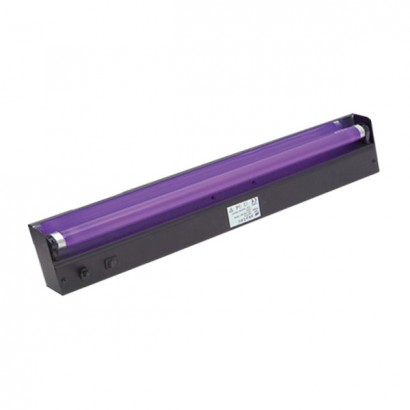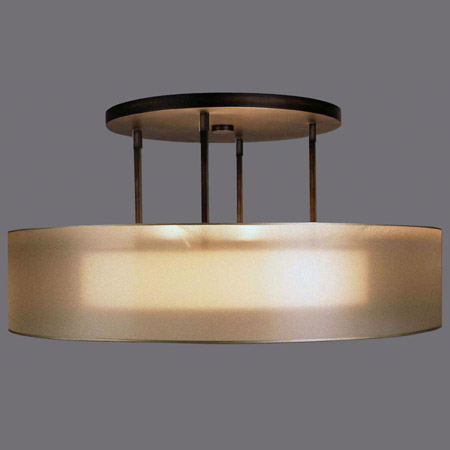Great Luxury Lighting Tips
Posted: 20 Feb 2022 12:35
The Best High-End Interior Lighting Guide
Lighting is an essential part of any interior. On the one hand, it can turn a drab room into a glossy-magazine-worthy space with the simple flick of a switch or, on the other, it can under- or over-illuminate resulting in headaches, tired eyes and lighting fatigue. As the famous late American interior designer Albert Hadley once intimated, "Design is defined by shade and light and the right lighting is crucially significant." This luxurious guide to lighting will guide you through a variety of different lighting types and provide expert ideas on how to design the lighting in your home interior.
Types Of Light
First, let's talk about the two types of lighting that we should all be familiar with lighting: natural and artificial.
1. Natural Light
Sunlight is among the best natural light sources. It's mentally stimulating and absolutely free. But, it's difficult to keep in check. The way light is perceived will differ dependent on where your house is located. The north gets more light than the south, and the east gets more. It also depends on the direction that your room faces. The level of light can also be affected by the seasons and season. The natural light is controlled with window treatments. Sara Cosgrove, interior designer, recommends that you use "sheers or window treatments" for rooms that have little natural lighting. Mirrored furniture (such as the Carina bedroom cabinet) can also be a viable option , and it can also offer storage space. If your room that receives a lot of sunlight, lined curtains are a good option in heavier fabrics to reduce the amount of light that enters your home. It is crucial to tackle the issue of the glare. A room too bright can make it look dull and flat. A window treatment that is able to be altered (such as louver, venetian roman blinds, slats or roman blinds) will help control sunlight and prevent the appearance of glare. But it won't alter the appearance of the window. Combustion light (i.e. Combustion light (i.e. candles and firelight) is an atmospheric source of natural light which should not be ignored. The addition of a fireplace makes the chalet reception area look more appealing. The elegant, statuesque candlesticks in a sculptural design, or candelabra look beautiful placed either at the end of a mantlepiece or on the formal dining table. The use of lanterns and hurricanes is utilized to create a relaxed setting indoors or outside.

2. Artificial Light
Artificial lighting is suggested to add a sense of warmth to your space with layers. The warmest option for living spaces is an ambiance that is warm rather than clear, light. Artificial lighting can be utilized to enhance the interior design of a space and create zones. It can also alter the perception of proportions. When planning your lighting plan, keep these five lighting categories in mind. It is important to consider what you will use the space for and where it is best to place it. After that, you are able to use a variety of lighting effects to create the desired appearance.
What Are The Types Of Interior Light
The five primary types of interior lighting include general ambient, mood accent, task. Some lights can fit into several types depending on their location, brightness, and usage. However it can be helpful to have an understanding of each kind to help you create a successful scheme.
A. General Lighting
General lighting is the foundation of a lighting scheme. It creates an even glow and lights spaces for their functional purposes. The primary characteristic of general lighting is that it's usually direct and should be controlled via an adjustable dimmer switch that accounts for changes in daylight. A central pendant light is perhaps the most popular source of general illumination, and can be an important part of the interior design. A beautiful or luxurious chandelier can create a striking visual impact in a room and draw the eye. Having said that, these must be accompanied by other lighting layers as the central source of light casts unflattering shadows (especially for those who are) and gives no actual life to a space. A light scheme that is so simple is generally considered vastly inadequate to create a warm and welcoming area. Check out most popular Tech lighting tips.

B. Accent Lighting
Accent lighting, which is similar to task lights is used for a particular purpose. It is lighting that has been added to highlight specific features within the space. Accent lighting can highlight art, sculptures, or objects placed on pedestals. Accent lighting is similar to task lighting in that it requires more lumens (light output) than task lighting. It therefore requires more power. Accent lighting can be lighting for architectural purposes. Accent lighting tends to be more subtle, but it highlights the textures and highlights perimeters more than a particular object. Check out recommended Asteria site.
C. Ambient Lighting
The second layer of lighting is ambient lighting that can be a perfect complement to general lighting. Both types share important characteristics--they're primarily functional and used to light a complete area. The primary distinction between them is in the direction of their lighting. Interior designer April Russell explains the difference by saying "General lighting is just that -- practical lighting for daytime and night usage. Ambience lighting should be connected to dimming systems in order to regulate the intensity according to event. Ambience lighting has a general purpose of creating excitement and drama. Imagine eyeball spotlights or wall sconces which wash the wall in illumination, backlit Perspex panelling or concealed coffer lighting which creates light on a ceiling like this cinema room designed by Finchatton, left. Ambient lighting is another example of architectural lighting. It is utilized to alter the size or appearance of spaces. This room, if dark, without ambient lighting would feel extremely restrictive. Have a look at the most popular Koncept lamp specialist.

D. Task Lighting
Task lighting, as its name implies, is a light source that is used for a specific purpose such as reading or cooking. They must have larger wattage than other lighting. Be sure to have enough ambient light available to prevent eyestrain from the stark contrasts in light and dark areas. Working and reading areas (like this home office designed by Elicyon) are among the most obvious areas that require task lighting. The balance-arm lamp is a great design for a desk, while flexible reading lights that are set near a headboard can be used for reading at the time of bed. Mirror lighting is great for personal grooming as well as bathrooms. In order to improve the efficiency of food preparation and safe, lighting needs in the kitchen must also be thought of. In terms of lighting for kitchen tasks There are a variety of options. There are downlights with recessed fixtures that are placed over the worktopsand long pendant lights above the island and an under-cabinet light. To make foot-flow pathways light fixtures for task lighting are utilized in rooms and hallways as well as with the help of floor-level lights or risers for stairs. Have a look at the recommended LZF lighting tips.
E. Mood Lighting
Mood lighting is as important to the overall design an area as general and ambient lighting and a room would appear empty without it. By creating light pools that block shadows that are caused by the ambient lighting, it makes an area feel more comfortable. It is also an important part of a room's design. This includes tables and floor lamps that are both popular choices in Parisian living rooms designed by Jean-Louis Deniot. If you're in search of table lamps, then a solid console or sidetable is the best option. In other cases, it's difficult to hide wires. Thread wires though a discreet hole that has been drilled into the top or tape or staple them down a leg. Plug sockets should be kept close to your lighting fixtures. This is another reason to postpone your electrical design until later in your design process. Filters are required to reduce the glare created by the bare bulbs. This is due to the fact that lighting for mood is typically located at the level of your eyes. If the bare bulb is evident from the ground it's equally crucial to shade your ambient or general lighting.
In Conclusion
CasaDiLuce There are many options available for high-end lighting. Before you make a choice, consider these tips above. CasaDiLuce.ca offers a variety of lighting fixtures that can aid you in creating the ideal ambience. Would you like to find out more? CasaDiLuce.ca is an online lighting store that offers Toronto products.
Lighting is an essential part of any interior. On the one hand, it can turn a drab room into a glossy-magazine-worthy space with the simple flick of a switch or, on the other, it can under- or over-illuminate resulting in headaches, tired eyes and lighting fatigue. As the famous late American interior designer Albert Hadley once intimated, "Design is defined by shade and light and the right lighting is crucially significant." This luxurious guide to lighting will guide you through a variety of different lighting types and provide expert ideas on how to design the lighting in your home interior.
Types Of Light
First, let's talk about the two types of lighting that we should all be familiar with lighting: natural and artificial.
1. Natural Light
Sunlight is among the best natural light sources. It's mentally stimulating and absolutely free. But, it's difficult to keep in check. The way light is perceived will differ dependent on where your house is located. The north gets more light than the south, and the east gets more. It also depends on the direction that your room faces. The level of light can also be affected by the seasons and season. The natural light is controlled with window treatments. Sara Cosgrove, interior designer, recommends that you use "sheers or window treatments" for rooms that have little natural lighting. Mirrored furniture (such as the Carina bedroom cabinet) can also be a viable option , and it can also offer storage space. If your room that receives a lot of sunlight, lined curtains are a good option in heavier fabrics to reduce the amount of light that enters your home. It is crucial to tackle the issue of the glare. A room too bright can make it look dull and flat. A window treatment that is able to be altered (such as louver, venetian roman blinds, slats or roman blinds) will help control sunlight and prevent the appearance of glare. But it won't alter the appearance of the window. Combustion light (i.e. Combustion light (i.e. candles and firelight) is an atmospheric source of natural light which should not be ignored. The addition of a fireplace makes the chalet reception area look more appealing. The elegant, statuesque candlesticks in a sculptural design, or candelabra look beautiful placed either at the end of a mantlepiece or on the formal dining table. The use of lanterns and hurricanes is utilized to create a relaxed setting indoors or outside.

2. Artificial Light
Artificial lighting is suggested to add a sense of warmth to your space with layers. The warmest option for living spaces is an ambiance that is warm rather than clear, light. Artificial lighting can be utilized to enhance the interior design of a space and create zones. It can also alter the perception of proportions. When planning your lighting plan, keep these five lighting categories in mind. It is important to consider what you will use the space for and where it is best to place it. After that, you are able to use a variety of lighting effects to create the desired appearance.
What Are The Types Of Interior Light
The five primary types of interior lighting include general ambient, mood accent, task. Some lights can fit into several types depending on their location, brightness, and usage. However it can be helpful to have an understanding of each kind to help you create a successful scheme.
A. General Lighting
General lighting is the foundation of a lighting scheme. It creates an even glow and lights spaces for their functional purposes. The primary characteristic of general lighting is that it's usually direct and should be controlled via an adjustable dimmer switch that accounts for changes in daylight. A central pendant light is perhaps the most popular source of general illumination, and can be an important part of the interior design. A beautiful or luxurious chandelier can create a striking visual impact in a room and draw the eye. Having said that, these must be accompanied by other lighting layers as the central source of light casts unflattering shadows (especially for those who are) and gives no actual life to a space. A light scheme that is so simple is generally considered vastly inadequate to create a warm and welcoming area. Check out most popular Tech lighting tips.

B. Accent Lighting
Accent lighting, which is similar to task lights is used for a particular purpose. It is lighting that has been added to highlight specific features within the space. Accent lighting can highlight art, sculptures, or objects placed on pedestals. Accent lighting is similar to task lighting in that it requires more lumens (light output) than task lighting. It therefore requires more power. Accent lighting can be lighting for architectural purposes. Accent lighting tends to be more subtle, but it highlights the textures and highlights perimeters more than a particular object. Check out recommended Asteria site.
C. Ambient Lighting
The second layer of lighting is ambient lighting that can be a perfect complement to general lighting. Both types share important characteristics--they're primarily functional and used to light a complete area. The primary distinction between them is in the direction of their lighting. Interior designer April Russell explains the difference by saying "General lighting is just that -- practical lighting for daytime and night usage. Ambience lighting should be connected to dimming systems in order to regulate the intensity according to event. Ambience lighting has a general purpose of creating excitement and drama. Imagine eyeball spotlights or wall sconces which wash the wall in illumination, backlit Perspex panelling or concealed coffer lighting which creates light on a ceiling like this cinema room designed by Finchatton, left. Ambient lighting is another example of architectural lighting. It is utilized to alter the size or appearance of spaces. This room, if dark, without ambient lighting would feel extremely restrictive. Have a look at the most popular Koncept lamp specialist.

D. Task Lighting
Task lighting, as its name implies, is a light source that is used for a specific purpose such as reading or cooking. They must have larger wattage than other lighting. Be sure to have enough ambient light available to prevent eyestrain from the stark contrasts in light and dark areas. Working and reading areas (like this home office designed by Elicyon) are among the most obvious areas that require task lighting. The balance-arm lamp is a great design for a desk, while flexible reading lights that are set near a headboard can be used for reading at the time of bed. Mirror lighting is great for personal grooming as well as bathrooms. In order to improve the efficiency of food preparation and safe, lighting needs in the kitchen must also be thought of. In terms of lighting for kitchen tasks There are a variety of options. There are downlights with recessed fixtures that are placed over the worktopsand long pendant lights above the island and an under-cabinet light. To make foot-flow pathways light fixtures for task lighting are utilized in rooms and hallways as well as with the help of floor-level lights or risers for stairs. Have a look at the recommended LZF lighting tips.
E. Mood Lighting
Mood lighting is as important to the overall design an area as general and ambient lighting and a room would appear empty without it. By creating light pools that block shadows that are caused by the ambient lighting, it makes an area feel more comfortable. It is also an important part of a room's design. This includes tables and floor lamps that are both popular choices in Parisian living rooms designed by Jean-Louis Deniot. If you're in search of table lamps, then a solid console or sidetable is the best option. In other cases, it's difficult to hide wires. Thread wires though a discreet hole that has been drilled into the top or tape or staple them down a leg. Plug sockets should be kept close to your lighting fixtures. This is another reason to postpone your electrical design until later in your design process. Filters are required to reduce the glare created by the bare bulbs. This is due to the fact that lighting for mood is typically located at the level of your eyes. If the bare bulb is evident from the ground it's equally crucial to shade your ambient or general lighting.
In Conclusion
CasaDiLuce There are many options available for high-end lighting. Before you make a choice, consider these tips above. CasaDiLuce.ca offers a variety of lighting fixtures that can aid you in creating the ideal ambience. Would you like to find out more? CasaDiLuce.ca is an online lighting store that offers Toronto products.